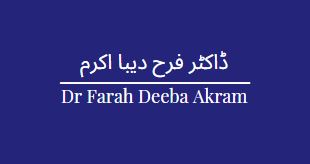In capital finance and economics, the effective interest rate for an instrument might refer to the yield based on the purchase price. This method is used for bonds sold at a discount or premium; the amount of the bond discount or premium is amortized to interest expense over the bond’s life. The effective interest method of amortization is a process used to allocate the discount or premium on bonds, or other long-term debt, evenly over the life of the instrument. The effective interest rate calculation is commonly used in relation to the bond market. The calculation provides the real interest rate returned in a given period, based on the actual book value of a financial instrument at the beginning of the period. If the book value of the investment declines, then the interest earned will decline also.
Brockhaus Technologies : Quarterly Statement Q1 2023 – Marketscreener.com
Brockhaus Technologies : Quarterly Statement Q1 2023.
Posted: Mon, 15 May 2023 07:00:00 GMT [source]
See a comparison between secured vs unsecured bonds, and term bonds vs serial bonds. Our mission is to empower readers with the most factual and reliable financial information possible to help them make informed decisions for their individual needs. Finance Strategists is a leading financial literacy non-profit organization priding itself on providing accurate and reliable financial information to millions of readers each year. At Finance Strategists, we partner with financial experts to ensure the accuracy of our financial content. The articles and research support materials available on this site are educational and are not intended to be investment or tax advice. All such information is provided solely for convenience purposes only and all users thereof should be guided accordingly.
Terms Similar to Effective Interest Method
For a bond purchased at face value, and where the book value of the bond remains relatively stable throughout its life to maturity, the straight-line amortization method works fine and is less difficult to calculate. In any event, when the bond reaches maturity, both the straight-line amortization and the effective interest rate method of calculating amortization will be equal. However, the effective interest method requires more work because it needs to be recalculated for every individual interest-earning period. Therefore, it is commonly only used when a bond is purchased at a significant premium or discount or when the bond’s book value increases or decreases significantly during the life of the bond. When a bond is sold at a discount, the amount of the bond discount must be amortized to interest expense over the life of the bond. If an entity buys or sells a financial instrument for an amount other than its face amount, this means that the interest rate it is actually earning or paying on the investment is different from the stated interest paid on the financial instrument.
The primary advantage of using the effective interest rate is simply that it is a more accurate figure of actual interest earned on a financial instrument or investment or of actual interest paid on a loan, such as a https://kelleysbookkeeping.com/s-corp-tax-return/ home mortgage. Bonds that have higher coupon rates sell for more than their par value, making them premium bonds. Conversely, bonds with lower coupon rates often sell for less than par, making them discount bonds.
Please Sign in to set this content as a favorite.
When a discounted bond is sold, the amount of the bond’s discount must be amortized to interest expense over the life of the bond. When using the effective interest method, the debit amount in the discount on What Is The Effective Interest Method Of Amortization? bonds payable is moved to the interest account. Therefore, the amortization causes interest expense in each accounting period to be higher than the amount of interest paid during each year of the bond’s life.
What is effective interest on amortized cost?
The effective interest rate (as defined in Appendix A of IFRS 9) is the rate that exactly discounts the estimated future cash flows to the gross carrying amount of a financial asset or amortised cost of a financial liability.
Alternatively, the bond’s carrying value on 1 July 2020 is equal to the unamortized discount of $6,516. Finally, the unamortized discount of $6,516 on 1 July 2020 in Column 5 is equal to the original discount of $7,024, less the amortized discount of $508. The bond’s carrying value in Column 6 is thus increased by $508, from $92,976 to $93,484. The interest expense based on straight-line amortization for the period between 2 January 2020 and 1 July 2020 is $6,702.
